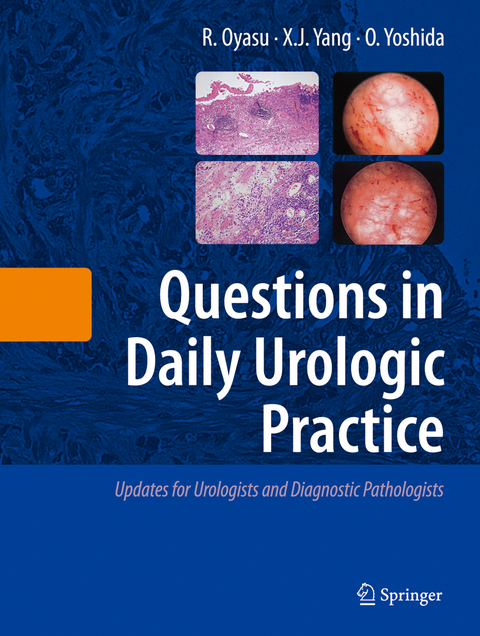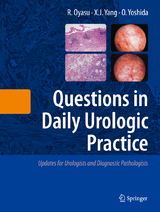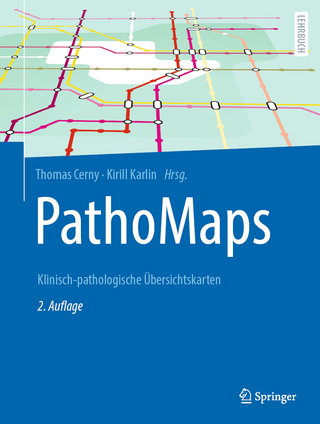Questions in Daily Urologic Practice
Updates for Urologists and Diagnostic Pathologists
Seiten
The principal role of the diagnostic surgical pathologist is to serve a patient by assisting the clinician in charge of the patient's care. It has been shown that a prostate needle core biopsy can generate much information that is immediately useful in predicting the extent of cancer in the prostate and, consequently, the outcome for the patient.
The principal role of the diagnostic surgical pathologist is to serve a patient by assisting the clinician in charge of the patient's care. In that capacity,the pathologist provides the vital informationthat should be directly and indirectly useful in guiding the clinician toward the most appropriate therapy. The material pathologists receive most commonly is a biopsy or a part of an organ removed after a definitive pro- dure. To extract useful information, pathological evaluation proceeds according to a set of guidelines. Simply reporting a diagnosis of cancer is inadequate. Detailed additional information is needed so that the clinician can go on to establish a the- peutic plan as needed. To best serve the patient, close interaction between the cli- cian and the pathologist is vital. In the field of urological pathology, there are problems specific to this system. Typically, in the prostate, because of its location, there is little room for a surgeon to work to obtain adequate resection margins, unlike with many other organs. As a result, questions arise such as "What constitutes an adequate surgical margin?" "What is the significance of extraprostatic extension of neoplasm that is still inside the resection margin?" and "What is the significance of neoplastic glands found on the resection margin marked with the ink?" It has been shown that a prostate needle core biopsy can generate much information that is immediately useful in predicting the extent of cancer in the prostate and, consequently, the outcome for the patient.
The principal role of the diagnostic surgical pathologist is to serve a patient by assisting the clinician in charge of the patient's care. In that capacity,the pathologist provides the vital informationthat should be directly and indirectly useful in guiding the clinician toward the most appropriate therapy. The material pathologists receive most commonly is a biopsy or a part of an organ removed after a definitive pro- dure. To extract useful information, pathological evaluation proceeds according to a set of guidelines. Simply reporting a diagnosis of cancer is inadequate. Detailed additional information is needed so that the clinician can go on to establish a the- peutic plan as needed. To best serve the patient, close interaction between the cli- cian and the pathologist is vital. In the field of urological pathology, there are problems specific to this system. Typically, in the prostate, because of its location, there is little room for a surgeon to work to obtain adequate resection margins, unlike with many other organs. As a result, questions arise such as "What constitutes an adequate surgical margin?" "What is the significance of extraprostatic extension of neoplasm that is still inside the resection margin?" and "What is the significance of neoplastic glands found on the resection margin marked with the ink?" It has been shown that a prostate needle core biopsy can generate much information that is immediately useful in predicting the extent of cancer in the prostate and, consequently, the outcome for the patient.
Prostate.- Kidney.- Urinary Bladder.- Testis.- Adrenals.
| Erscheint lt. Verlag | 30.4.2008 |
|---|---|
| Zusatzinfo | 139 Illustrations, color; X, 287 p. 139 illus. in color. |
| Verlagsort | Tokyo |
| Sprache | englisch |
| Themenwelt | Medizin / Pharmazie ► Medizinische Fachgebiete ► Urologie |
| Studium ► 2. Studienabschnitt (Klinik) ► Pathologie | |
| ISBN-10 | 4-431-72818-X / 443172818X |
| ISBN-13 | 978-4-431-72818-4 / 9784431728184 |
| Zustand | Neuware |
| Haben Sie eine Frage zum Produkt? |
Mehr entdecken
aus dem Bereich
aus dem Bereich




